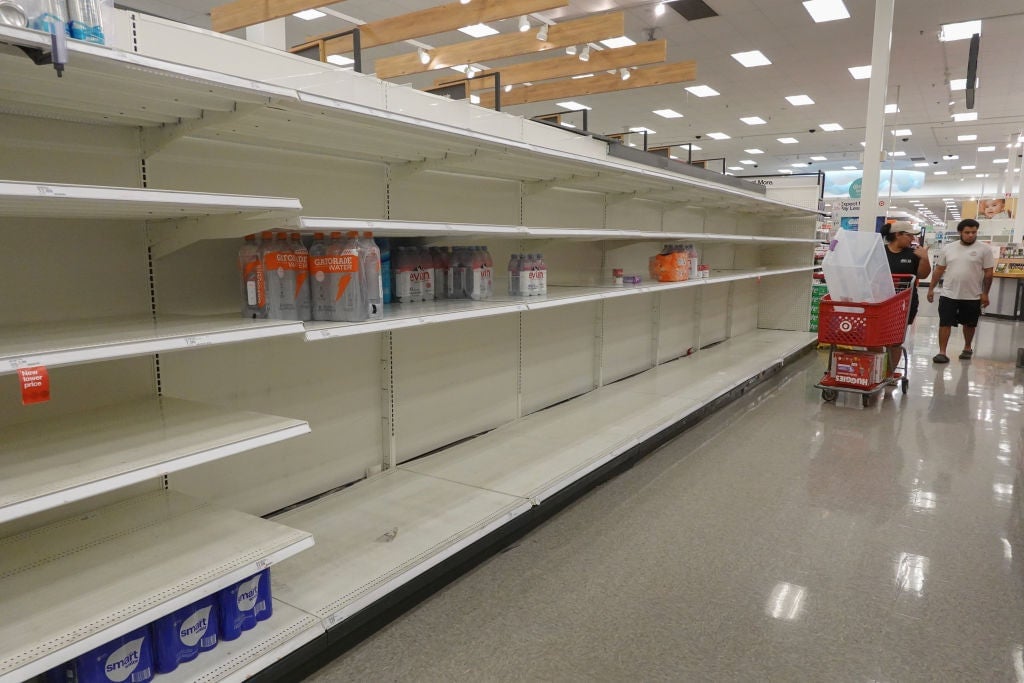Empty shelves are coming, Apollo economist says — and so is a 'voluntary' recession
Major retailers will soon file for bankruptcy as a recession takes hold, economist Torsten Slok predicts

Empty shelves could be coming by next month and a recession will arrive this summer, according to an economist.
Suggested Reading
Torsten Slok, chief economist at Apollo Global Management (APO), earlier this month calculated the probability of what he calls a “voluntary trade reset recession” at 90% in the face of President Donald Trump’s tariffs. And in a new report published this weekend, he points to the decreasing flow of container ships from China to the U.S. as a major domino that will lead to that recession in a matter of months.
Related Content
By mid-May, Slok writes, the movement of container ships will “come to a stop.” Later that month, demand for trucking will also grind to a halt.
That will lead to empty shelves in stores. Companies will be forced to respond to declining sales, which will mean layoffs at retailers and trucking companies sometime in late May or early June.
Then, by the summer, that will equal a full-blown recession.
Slok points to a number of factors working against the U.S. economy: the tariffs themselves, as well as lower consumer and corporate confidence, retaliation and declining tourism from other countries, and DOGE’s mass firings, among others.
Slok’s report points to the “rapid downward revisions” that many companies have made to their earnings expectations since President Trump’s “Liberation Day” tariffs announcement on April 2, as well as the fact that new orders are falling and inventories are rising.
“The administration inherited an economy with strong growth, 4% unemployment, positive hiring, and a substantial tailwind from investments,” Slok writes. “But implementing extremely high tariffs overnight hurts many businesses; particularly small businesses because the tariff must be paid by the business when the imported goods arrive in the U.S.”
Slok points out that small businesses often do not have the capital to work tariffs into their costs.
“Expect ships to sit offshore, orders to be canceled, and well-run generational retailers to file for bankruptcy,” he writes.
And with small and medium businesses making up 80% of U.S. employment, that will lead to macroeconomic problems. Slok calculates that increasing the average tariff rate from 3% to 18% will negatively impact the U.S. GDP by four percentage points in 2025.
According to the report, U.S. earnings outlooks are showing their sharpest declines since the Covid-19 pandemic. New orders are collapsing, and manufacturing costs are already on the rise — which is leading to higher prices for consumers. Another telltale sign: Truck sales declined sharply in March.
Meanwhile, CEO and consumer confidence are way down compared to just a few months ago. Nearly 70% of Amerians are worried about losing their jobs — a rate not seen since the 2008-2009 financial crisis.
When combined, all these factors point to a rapidly approaching recession.
Still, Slok writes, there is a path to preventing this. The U.S. can negotiate with Mexico and Canada around labor, capital, and natural resources. Other countries could be given 180 days to negotiate non-tariff issues, and the tariffs could be removed if an agreement is reached. For China, the U.S. could keep tariffs in place on “autos, solar, and other strategic product groups,” and phase in other tariffs over the next 18 to 24 months.
“But, the bottom line,” Slok cautions, is this: “If the current level of tariffs continues, a sharp slowdown in the U.S. economy is coming.”
